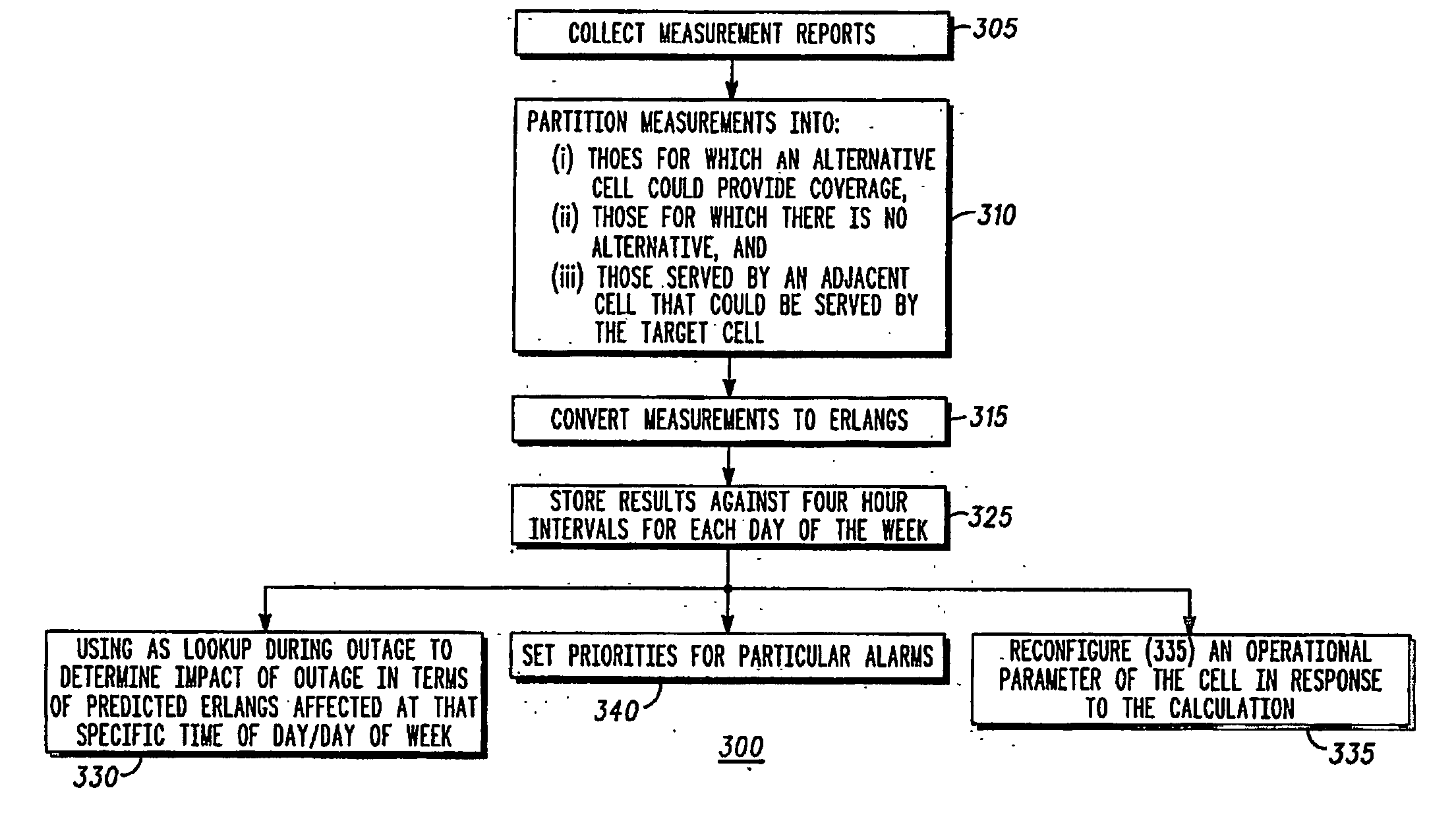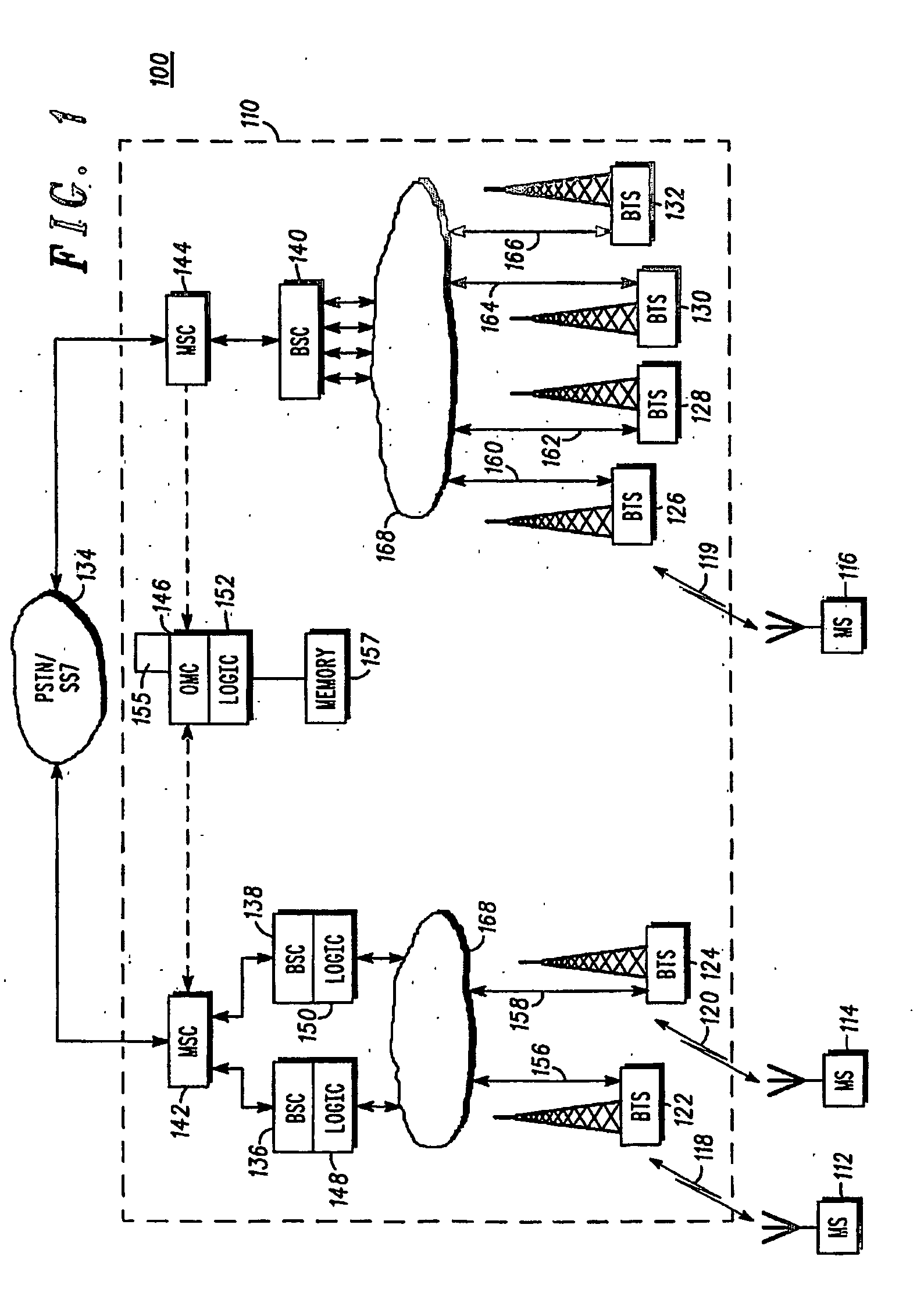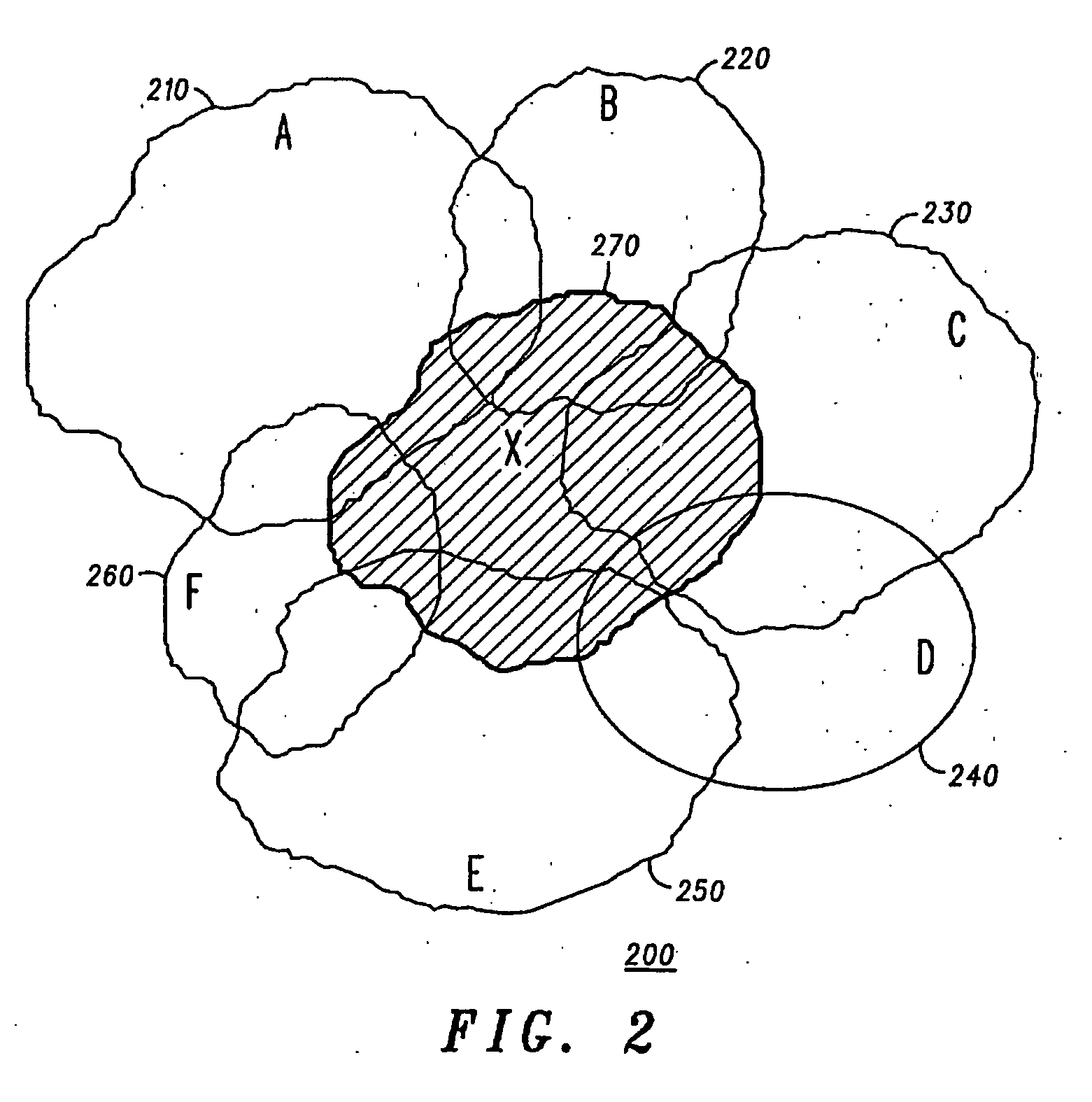Method for determining a coverage area in a cell based communication system
a cell-based communication and cell-based technology, applied in the direction of electrical equipment, network planning, selection arrangements, etc., can solve the problems of inability to achieve idealised cell patterns in practice, affecting the sensitivity performance of receiving wireless communication units, and affecting the coverage area
- Summary
- Abstract
- Description
- Claims
- Application Information
AI Technical Summary
Benefits of technology
Problems solved by technology
Method used
Image
Examples
Embodiment Construction
[0023] The inventive concepts of the present invention propose a mechanism for using measurement reports (MRs) to determine both the unique and overlapping (and therefore interfering) coverage generated by each cell. In particular, three aspects of a respective cell's coverage may be determined: [0024] (i) The amount of traffic that receives coverage uniquely from this cell; [0025] (ii) The amount of traffic that receives coverage from this cell, but which could also obtain coverage from an adjacent cell; and [0026] (iii) The amount of traffic carried by adjacent cells that could provide coverage to this cell.
[0027] From a perspective of a serving cell, at one extreme, it is known that the coverage area of the cell may be completely overlapped by one or more adjacent cells. At the other extreme, the coverage area of two cells may be configured to not overlap at all. This variation has significant implications for system operation. For example, if a cell goes off-air, then subscribe...
PUM
 Login to View More
Login to View More Abstract
Description
Claims
Application Information
 Login to View More
Login to View More - R&D
- Intellectual Property
- Life Sciences
- Materials
- Tech Scout
- Unparalleled Data Quality
- Higher Quality Content
- 60% Fewer Hallucinations
Browse by: Latest US Patents, China's latest patents, Technical Efficacy Thesaurus, Application Domain, Technology Topic, Popular Technical Reports.
© 2025 PatSnap. All rights reserved.Legal|Privacy policy|Modern Slavery Act Transparency Statement|Sitemap|About US| Contact US: help@patsnap.com



